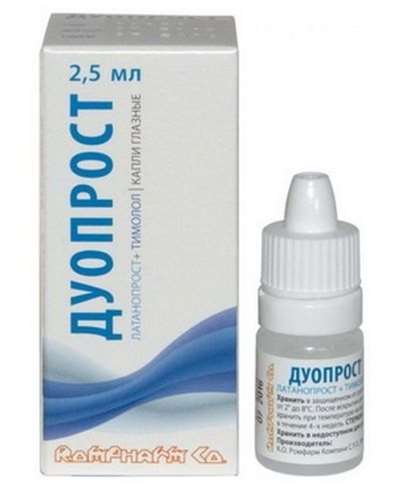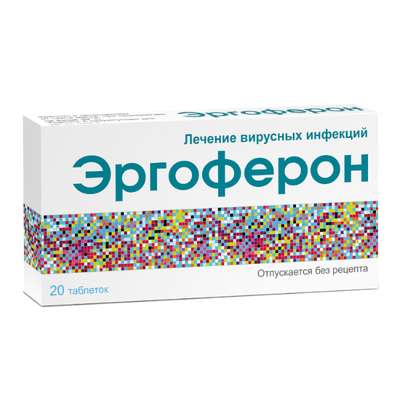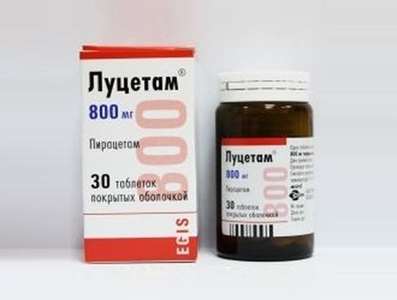Instruction for use: Tretinoin (Tretinoinum)
I want this, give me price
Pharmacological group
Vitamins and vitamin-like remedies
Vitamins and vitamin-like remedies
dermotropic means
Nosological classification (ICD-10)
C92.4 Acute promyelocytic leukemia
L70 Acne
Acne nodulocystica, Acne, Comedone acne, Acne Treatment, Papulous pustular acne, Papulopustulicular acne, Papulo-pustular acne, Acne, Acne Disease, Acne, Acne vulgaris, Nodular-cystic acne, Nodular-cystic acne
L81.8.0 * Hyperpigmentation
Cronkheta-Canada syndrome, Melasma, Pathological hyperpigmentation
L98.8 Other specified diseases of skin and subcutaneous tissue
Favre-Canculo disease, Interdigital erosion, Ultrasonic cystic skin elastosis with comedones, Benign skin change
CAS 302-79-4
Characteristics of Tretinoin
Yellow or light orange crystalline powder with a characteristic floral odor, soluble in dimethylsulfoxide, hardly soluble in polyethylene glycol, octanol and 100% ethanol, practically insoluble in water, mineral oils and glycerin.
Pharmacology
Pharmacological action - antitumor, keratolytic, anti-seborrheic, comedonolytic, anti-inflammatory local.
Belongs to a group of retinoids, structurally close to vitamin A, is a natural metabolite of retinol. It induces differentiation processes and inhibits the proliferation of promyelocytes due to a disruption of binding of tretinoin to nuclear retinoic acid receptors. Activates the initial maturation of primitive promyelocytes originating from the leukemia clone, and their replacement in the bone marrow and peripheral blood by normal polyclonal hemopoietic cells, i.e. leads to remission. The duration of remission is on average 2-4 months.
With local application, penetrating through cell membranes, forms a cytoplasmic complex that enters the cell nuclei. The resulting hormone receptor complex, binding to DNA, interferes with transcription and thereby disrupts protein synthesis. This mechanism underlies the hypopigment activity of tretinoin. Stimulates the mitosis of the epidermal cells, increases the number of glycosaminoglycans, elastic fibers in the papillary layer of the skin. Inhibits melanogenesis, increases the growth and differentiation of epithelial cells, inhibits the adhesion of cells that form acne. When treating open acne promotes the smoothing of the skin surface without signs of inflammation, when treating closed eels helps them open or pass into the papules with subsequent healing (without scarring), prevents the formation of new acne. Has anti-seborrheic, anti-inflammatory, keratolytic, immunostimulating action. The therapeutic effect develops for 6-7 weeks of treatment of acne, the maximum is usually observed at 8-12 weeks of treatment.
In experimental studies, when exposed to the skin at doses 50 times that recommended for humans (500 mg of gel per day), the weakening of fertility was not observed in rats and rabbits, the embryos showed an increase in the irregular contouring and ossification of the skull; in rabbits at doses 100 times higher than recommended for humans in rats at doses 400 times higher than recommended for humans, a fetotoxic effect was noted; in rats and rabbits at doses 100 and 320 times higher than the usual for a person (locally) - the development of hydrocephalus and other congenital changes in bones. With topical use of tretinoin in doses 100 and 200 times higher than recommended for humans, the growth of skin tumors was noted in females, in males the growth of liver tumors, in albino mice, the growth of skin tumors induced by UV irradiation. In laboratory studies, when administered to mice tretinoin inside at a dose of 30 mg / kg (2 times higher than recommended for humans), there was an increase in adenomas and liver carcinomas; in mice, rats, rabbits, monkeys, hamsters at a dose of 5 mg / kg / day (comparable to 2/3 of the dose recommended for humans) - an increase in the frequency of fetal resorption; in dogs with a dose of 10 mg / kg / day (4 times higher than recommended for humans), there was a violation of the processes of spermatogenesis. Teratogenic and embryotoxic effects were observed with doses exceeding 0.7 mg / kg / day in mice, 2 mg / kg / day in rats, 7 mg / kg / day in hamsters, 10 mg / kg / day in monkeys (equivalent 1/20, 1/4, 1/2 and 4 doses recommended for humans, respectively). When testing for mutagenicity, negative results were obtained. There was an increase in changes in the sister chromosomes of human diploid fibroblasts and the absence of clastogenic and aneuploid effects in vitro in human peripheral lymphocytes and in vivo during micronuclear testing in mice.
When ingested quickly absorbed from the digestive tract. Cmax is achieved in 1-3 hours. It binds to plasma proteins (predominantly with albumin) by 95%. T1 / 2 is 0.5-2 h (in patients with acute promyelocytic leukemia). After a single dose of 40 mg plasma concentration is returned 7-12 hours to the baseline. It induces its own metabolism - a decrease in AUC and a decrease in plasma concentration by about 1/3 after a week of constant therapy is observed (increasing the dose does not lead to an adequate increase in concentration). It is excreted in the urine (60%) in the form of metabolites formed during oxidation and glucuronization, for 72 hours and feces for 3-6 days. With repeated administration, the concentration decreases due to the induction of cytochrome oxidases, which leads to increased clearance and reduced bioavailability. With the cutaneous application, the absorption is from 1.41% to 31% (depending on the skin condition, surface area of the treated surface, duration of use). It is excreted in the urine with 4.45% and bile 1.58% of the absorbed dose.
Application of Tretinoin
For oral administration: induction of remission with acute promyelocytic leukemia, characterized by translocation t (15; 17) and / or presence of chimeric PML / RAR-alpha gene in patients previously untreated, incl. with recurrences after chemotherapy with the inclusion of anthracyclines or refractory to standard chemotherapy regimens.
For topical application: acne draining, vulgar, incl. with the formation of comedones, papules, pustules, Favre-Rakusho disease (nodular cystic skin elastosis with comedones), hyperpigmentation.
Contraindications
Hypersensitivity, for topical application - acute inflammatory (including eczematous) skin lesions (dermatitis, seborrhea, etc.), rosacea, wounds, skin burns, photosensitization, rectum diseases.
Restrictions for use
The absence of reliable contraception in women of childbearing age, intracranial hypertension (especially in children), hypercholesterolemia, hypertriglyceridemia, leukocytosis (more than 5 · 109 / L), impaired liver and kidney function, pancreatitis, diabetes mellitus, chronic intoxication (including alcoholic ), age over 50 years, children's age (with the appointment inside - up to 1 year and up to 12 years - with local use).
pregnancy and lactation
Contraindicated in pregnancy. The appointment of retinoids to pregnant women leads to the termination of pregnancy and the violation of the formation of the fetus (disruption in the formation and development of structures of the central nervous system, eyes, thymus, muscular system, etc.). For the duration of treatment, breastfeeding should be discontinued.
Side effects of Tretinoin
From the side of the cardiovascular system and blood (hematopoiesis, hemostasis): arrhythmia (23%), arterial hypotension (14%), hypertension (11%), phlebitis (11%), heart failure (6%), 3% - Myocardial infarction, myocarditis, pericarditis, pulmonary hypertension, cardiomyopathy; violation of blood clotting (phlebitis, DIC syndrome, intracranial hemorrhage), peripheral edema, ascites, basophilia, hyperhistaminemia, hypercalcemia.
From the nervous system and sensory organs: dizziness (20%), paresthesia (17%), anxiety (20%), insomnia (14%), depression (14%), intracranial hemorrhage (9%), intracranial hypertension (9% , more often in children), stimulation (9%), hallucinations (6%), headache, weakness, fatigue, confusion, agitation, drowsiness, convulsive syndrome, dementia, hallucinations; 3% - agnosia, aphasia, cerebral edema, coma, dysarthria, encephalopathy, hemiplegia, hyporeflexia, tremor, spinal cord injury and other neurological reactions; impaired vision and hearing.
Gastrointestinal bleeding (34%), abdominal pain (31%), diarrhea (23%), constipation (17%), dyspepsia (14%), hepatosplenomegaly (9%), hepatitis (3% ), peptic ulcer disease (3%), nonspecific liver disorders (3%), bullous stomatitis, lack of appetite, nausea and vomiting, weight change, jaundice, pancreatitis.
On the part of the genitourinary system: renal dysfunction (11%), dysuria (9%), acute renal failure (3%), prostate enlargement (3%), renal tubular necrosis (3%).
On the part of the respiratory system: upper respiratory tract infections (63%), dyspnea (60%), respiratory failure (26%), pleurisy (20%), pneumonia (14%), wheezing (14%), expiratory dyspnea (14 %), lower respiratory tract infections (9%), pulmonary infiltration (6%), pulmonary edema (3%), bronchial asthma (3%), laryngeal edema (3%), nonspecific lung diseases (3%), cough , edema of the nasal mucosa.
From the skin: alopecia, increased sweating, cellulite, dry skin and mucous membranes, xerophthalmia, cheilitis, dermatitis, face swelling, rash, erythema, pruritus, intradermal hemorrhages; with topical application - burning sensation, hyperemia, swelling, blistering, peeling, temporary foci of hyper- or hypopigmentation, photosensitization; extremely rarely - contact allergic, exfoliative, bullous dermatitis.
Other: hypothermia, increased triglycerides, cholesterol, transaminases, general pain syndrome (myalgia, bone pain), acidosis, "retinoic acid syndrome" (fever, dry mucous membranes, nausea / vomiting, rash, mucositis, acute respiratory distress syndrome , shortness of breath, pneumonia, laryngeal edema, pulmonary edema, bronchial asthma, pulmonary infiltration, hyperleukocytosis, hypotension, pleurisy, renal, hepatic or multiple organ failure (possibly fatal), infection (septicemia) , lethargy.
Interaction
Incompatible with tetracyclines (increases the risk of developing intracranial hypertension), oral contraceptives containing progesterone (reduces the effect of contraception), vitamin A (risk of hypervitaminosis A), as well as photosensitizing drugs (sulfonamides, thiazide diuretics, phenothiazines, etc.), cosmetic and hygienic agents that cause desquamation, dryness and irritation of the skin. Tretinoin increases the systemic effect with topical use of minoxidil. When topical application of systemic use of retinoid-containing substances, as well as prolonged exposure to the sun, a hot climate, UV irradiation increase the risk of adverse reactions. Ketoconazole and other drugs that affect hepatic cytochrome oxidase, increase the concentration of tretinoin in the plasma. The therapeutic effect with local administration is enhanced when combined with benzoyl peroxide and antibiotics (should not be prescribed at the same time).
Overdose
Symptoms: "retinoic acid syndrome".
Treatment: to conduct a course of treatment with dexamethasone (10 mg every 12 hours for 3 days).
Routes of administration
Inside, locally.
Precautions for Tretinoin
When administered orally, treatment is performed in a hospital setting under the supervision of an oncologist or hematologist. Before starting treatment with leukemia, a cytogenetic study is needed to detect changes in chromosomes (in the absence of translocation of the chromosome t (15; 17) and / or the corresponding PML / RAR-alpha transcript, other drugs are indicated). During treatment, it is necessary to control the level of cholesterol, triglycerides, the number of leukocytes, liver function. Adequate measures and facilities should be provided to diagnose and treat possible complications. After cessation of treatment after 2-4 weeks, a relapse of acute leukemia is possible. Women (even with anamnestic indications of infertility) need to apply adequate contraceptive measures for a month before, during and during the month after completion of the course. The application begins on the 2-3rd day of the normal menstrual cycle. The absence of pregnancy should be confirmed by laboratory methods 2 weeks before the start of treatment, such studies should be conducted at least once a month. It should be refrained from using in pediatric practice, since safety and effectiveness of its use in children are not defined. With a significant increase in the number of leukocytes in the blood for the prevention of "retinoic acid syndrome," treatment should be combined with a full-dose chemotherapy course (it is prescribed on day 5 of treatment - with a total number of leukocytes 6 · 109 / l, 10 days - with a total number of leukocytes 10 · 109 / l, on day 15 - with the total number of leukocytes 15 · 109 / l and more, immediately - if treatment is started against the background of an increased number of leukocytes more than 10 · 109 / l).
In case of external application during treatment, the treated skin areas should be protected from exposure to sunlight and artificial UV irradiation, wind, cold; patients with sunburn, treatment should begin after weakening the sunburn. After contact with mucous membranes, rinse with water.

 Cart
Cart





